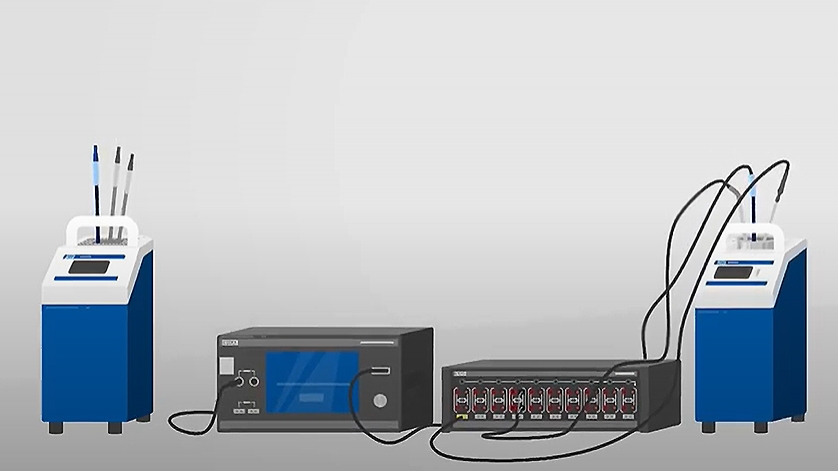
Can dry-well calibrators and calibration baths be used as internal references? Temperature dry-well calibrators and baths are a practical solution for temperature calibrations. This is true both in the field and in laboratories, as they provide a free-standing, stable temperature source with a built-in platinum resistance thermometer (PRT).
The PRT measures the temperature inside the dry-well calibrator or calibration bath and displays the current bath temperature. So, do you need another reference probe or is the dry-well calibrator or bath sufficient to perform a full calibration?
Are dry-well calibrators and baths suitable as references?
Dry-well calibrators and baths provide very stable, uniform heat sources for calibrations. They are equipped with PRTs to control their temperature. While these PRTs have sufficient accuracy to perform this control function, they are generally not suitable as a reference for calibrating temperature probes. There are three reasons for this:
- Their accuracy is generally the same as that of a typical calibrated probe (known as a test item), so there is not the required test uncertainty ratio (TUR).
- They are fixed in one place in the dry-well calibrator or calibration bath. If the test item is not placed immediately adjacent to the PRT (which may not be possible or a practical solution), additional errors may occur due to distribution errors.
- Since the PRT is fixed, it is generally impractical to have it recalibrated after installation in the calibration bath or dry-well calibrator.
Which temperature probe should be used as a reference?
For the above reasons, a reference PRT is generally used in conjunction with a bath or dry-well calibrator to calibrate temperature probes such as PRTs and thermocouples. Normally, these PRTs have their own separate display. To minimise the amount of equipment needed for field or plant use, many portable dry-well calibrators and calibration baths have a built-in PRT reference display. A separate display provides a higher degree of accuracy. With some baths and dry-well calibrators, it is possible to select the reference PRT instead of the built-in PRT to control the bath. This allows for more accurate temperature control as well as a lower distribution error.
Preparing to calibrate with reference probes
Set the dry-well calibrator or the calibration bath to the desired temperature set point and insert the reference PRT and the test items into the bath fluid or the insert of the dry-well calibrator. Position the sensor elements of the reference PRT and the test items as close together as possible. They can usually be mounted at the same height and with a small distance from each other. Dry-well calibrator inserts can have several bores, typically with the reference PRT bore in the centre and one or more test item bores around it. Calibration baths can usually hold many test items. These should be arranged in the tank so that they do not obstruct the flow and circulation of the bath fluid.
When the dry-well calibrator or the calibration bath has reached the set point and stabilised, the reference and test item temperatures must be documented. Then the next set point must be set and the procedure starts again. Tools are available to automate the calibration process, allowing faster throughput and a lower risk of data entry errors. Calibration baths and, to a lesser extent, dry-well calibrators, change temperature relatively slowly. Therefore, to speed up the calibration process, multiple temperature sources with a fixed set temperature are often used. The reference PRT and the test item(s) are exchanged between the temperature sources. Should the case arise that a bath or dry-well calibrator does not cover the entire temperature range for the calibration of the test item, several sources make it available.
Note
Further information on our dry-well calibrators and calibration baths can be found on the WIKA website. Should you have any questions, your contact will gladly help you.
See also our post
Calibration bath or dry-well calibrator – which is the right choice?
The following video will also inform you about comparative calibration or fixed-point calibration when calibrating temperature probes:

